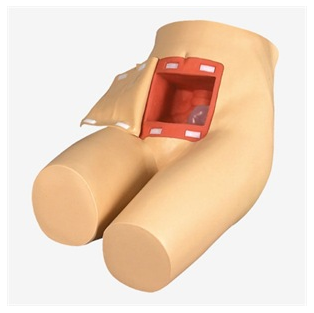Homepageпјҡ NEWS >> From theory to practice: the bridge between enema and assisted defecation training model
In the world of medical education, the combination of theory and practice is crucial. However, for some specific medical skills, such as enemas and assisted defecation, it is often difficult to fully translate the learning of theoretical knowledge into practical proficiency. At this time, the enema and assisted defecation training model has become a bridge between theory and practice, playing an indispensable role.

First, the enema and assisted defecation training model provides a safe, risk-free practice environment for medical personnel. In a real medical setting, enemas and assisted defecation procedures may involve the privacy and dignity of the patient, and there are risks that may result from improper operations. The emergence of the training model enables medical personnel to practice repeatedly in a simulated real environment without worrying about problems that may occur in actual operation, thus reducing operational risks and improving medical safety.
Secondly, the highly simulated nature of the training model enables medical personnel to understand the theoretical knowledge more deeply in practice. By simulating the real human structure and response, the training model can simulate various scenarios of enema and assisted defecation, so that medical personnel can personally experience and feel every detail of the actual operation. This experiential teaching method can not only help medical personnel better grasp the theoretical knowledge, but also deepen their understanding and memory of the operation points.
In addition, the model of enema and assisted defecation training also has repeatability and adjustability. Medical personnel can choose different operational difficulties and scenarios to practice according to their own needs and levels, so as to gradually improve their operational skills and coping abilities. At the same time, the training model can also be adjusted and optimized according to the feedback and actual needs of medical personnel, so that it is more in line with clinical practice and teaching needs.
Most importantly, the role of enema and assisted defecation training model in medical education is not only reflected in the improvement of skills, but also reflected in the improvement of medical personnel's patient care and communication ability. By simulating doctor-patient interaction in real scenarios, medical personnel can better understand the needs and feelings of patients, so as to pay more attention to the experience and satisfaction of patients in actual work.
To sum up, the model of enema and assisted defecation training plays an important role in medical education. It not only provides a safe and risk-free practice environment for medical personnel, but also helps them better understand and master theoretical knowledge, improve operational skills and service quality. At the same time, the training model can also promote the communication and care between medical personnel and patients, and inject new vitality into the future development of medical education.